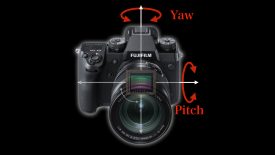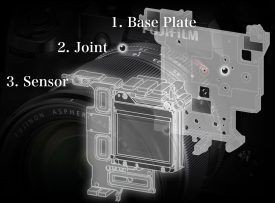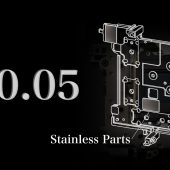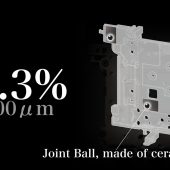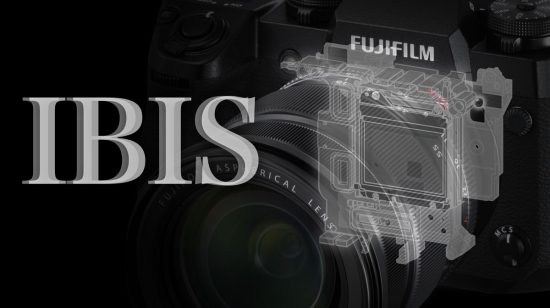
Fujifilm released their seventh Development Story covering IBIS, but it strictly covers the hardware side of IBIS and not the software side mentioned by Jun Watanabe in his interview with DPReview. We were already quite aware of the tight tolerances needed for Fujifilm IBIS to perform optimally, which they relayed by discussing laser measurement, but in their latest article, Fujifilm covers the different components of their system.
“Precision is the key to make a good IBIS. The depth of field varies on the focal length, but generally speaking it is shallower than 5 microns for the light rays of F1.4. The image can get blurry when it is off just by 1 micron. The XF lenses have characteristics of clear separation between focal plane and defocus area.”
It’s interesting to release a precise measurement of light being in focus because this is very technical information beyond most readers. 5 microns at f/1.4 (we can assume they are talking about the Fujinon XF35 1.4) is between the size of a red blood cell and bacteria, it is actually about the size of fine talcum powder. Further, the IBIS system has to be within the tolerances of 1 micron to avoid any blur that could be caused by the system, which is about the size of E. Coli or a smoke particle. This is interesting stuff to grasp and could have been better explained via analogies because 1 micron is a very tight tolerance. The scaled is difficult would best be expressed with an analogy anecdote. All of this must be taken into account with an IBIS camera when moving the sensor, but it’s not really an issue with a fixed sensor because the tolerances are fixed in the body.
The base plate, joint, and sensor are all key parts involved in maintaining the toleranced necessary for Fujifilm’s X-H1 IBIS system to work properly. Fujifilm had to go beyond building a rigid body to accomplish these tolerances.
“The joint, which is shaped like a ball, is placed on the surface of the base. In order for the ball to move smoothly, the surface of the base also needs to be smooth. However the problem is that the base plate is made of magnesium alloy and is not smooth enough even when polished. To work out the problem, we combined it with a mirror-finish stainless plate….The stainless plate has the value of Ra0.05. Ra is the measurement for smoothness, meaning the average unevenness of the surface is maintained under 0.05 micron….The joint is also special. It is made of durable ceramic that is tough against deformation. The diameter of the ball is 1,500 micron and the manufacturing tolerance is ±0.3% (less than 5 microns)….
The sensor surface needs to be adjusted in quickness and with precision. The key to the fast and accurate positioning is the torque. If the actuator lacks power, then it can probably handle positioning of the sensor. It cannot guarantee quick and precise positioning….The actuator of the IBIS unit in the X-H1 is quite big. It is double the size of a typical unit for the APS sensor. But it means that this is twice as much powerful.
According to X-H1 Development Story #7 -In-Body Image Stabilization this attention to precision led to a happy accident when engineers accidentally set the vibration generation machine to twice what it should have been the Fujifilm X-H1 camera was the only camera capable of handling the load. Now, this setting could have been their testing start point so don’t get too excited, but Fujifilm is humble bragging that they have the best IBIS system currently available. From what I have heard it is very good, but I haven’t seen a lot of silky smooth stabilized footage yet. Hopefully, we will see some in the coming days as more users receive theirs.
Development Story #6
Development Story #5
Development Story #4
Development Story #3
Development Story #2
Development Story #1
Follow us on Facebook, Twitter, Instagram, YouTube
Fujifilm X-H1 News, Rumors, and Collaboration
Fujifilm X-H Owners Group
Fujifilm X-H Page
X-H1 Camera: B&H Photo / Amazon / Adorama
X-H1 Body with Battery Grip Kit: B&H Photo / Amazon / Adorama
VPB-XH1 Vertical Power Booster Grip: B&H Photo / Amazon / Adorama
